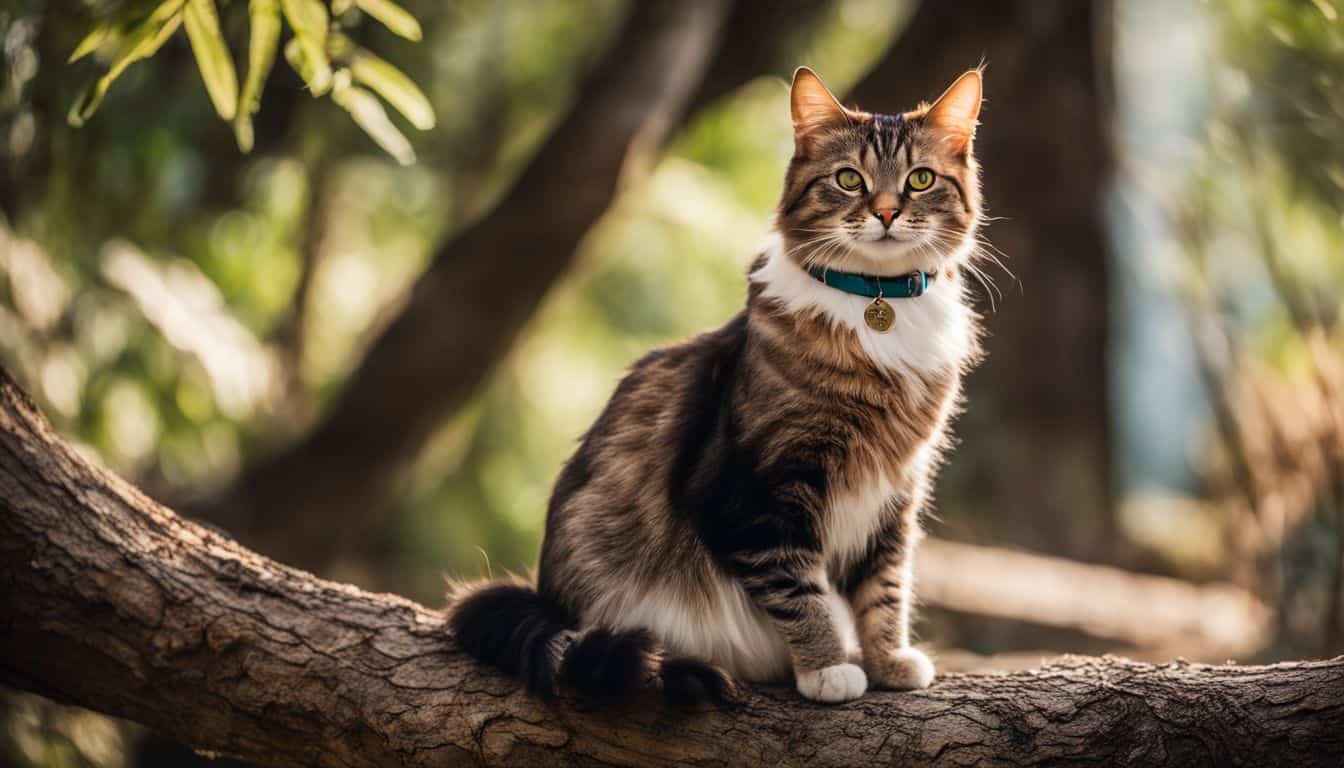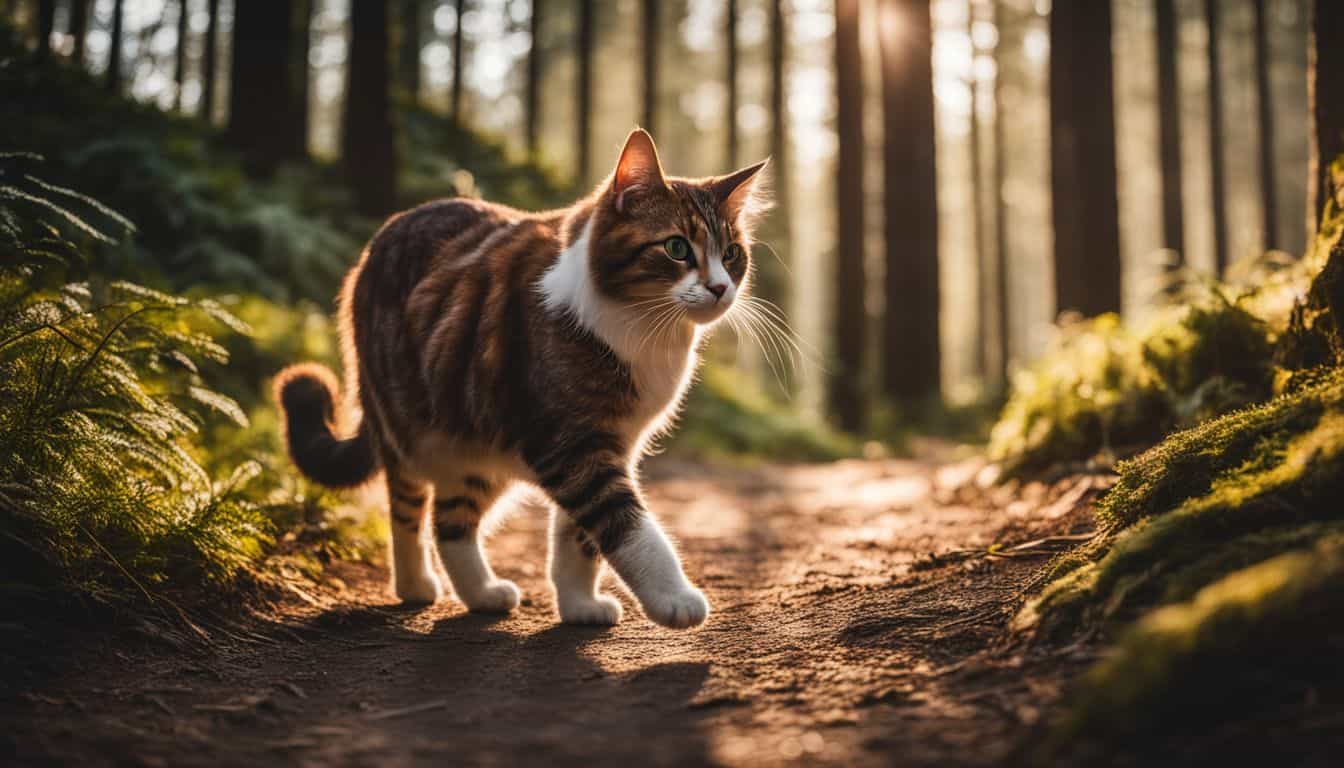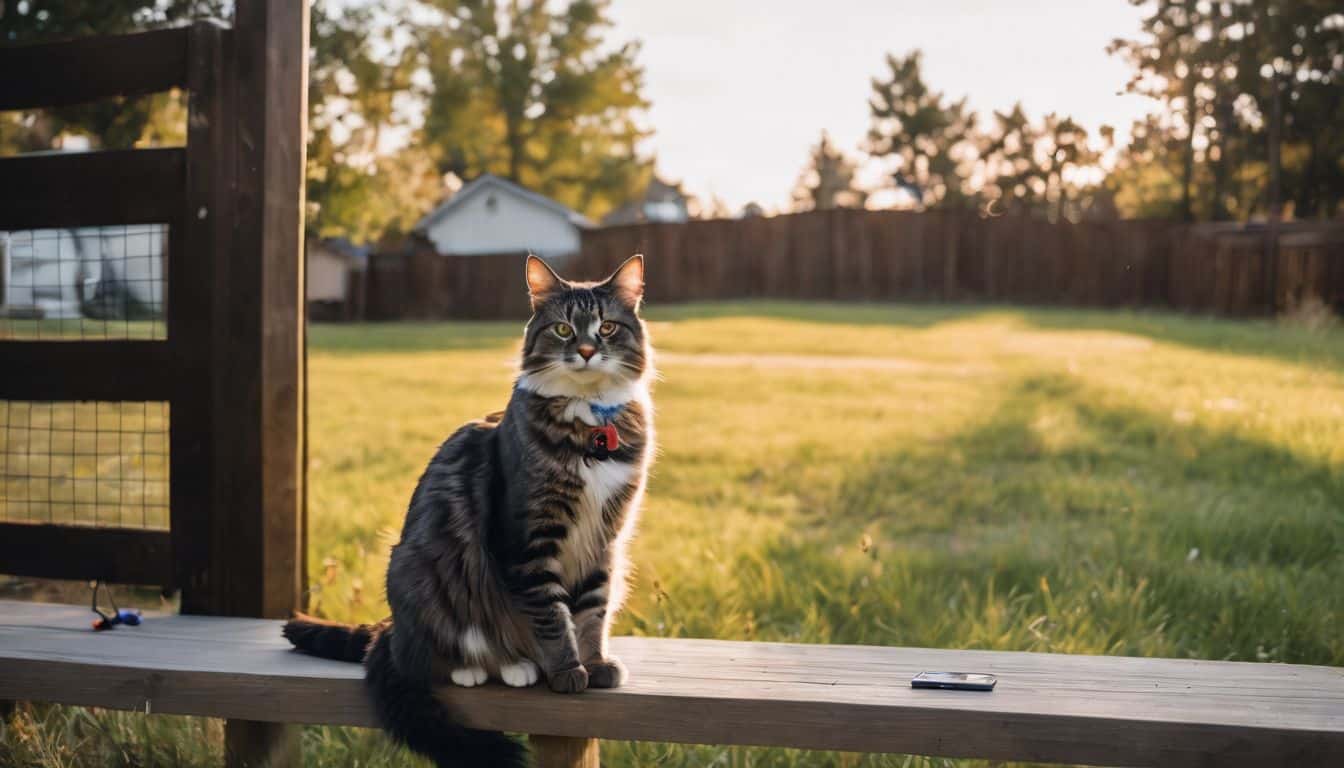While camping with cats can be a unique and rewarding experience, it’s crucial to prioritize their safety in an unfamiliar outdoor environment. Here are some essential tips to keep your feline friend safe during your camping adventures:
Secure Outdoor Access
Providing a safe outdoor space for your cat is paramount when camping. Consider using a cat-specific tent or enclosure that allows your feline friend to experience the outdoors while remaining protected. These enclosures can be set up at your campsite, giving your cat a controlled environment to explore.
A “catio” setup can also be an excellent option for camping. This portable outdoor enclosure provides a larger space for your cat to roam, climb, and observe nature without the risks associated with free roaming. Remember, always supervise your cat when they’re outside the tent or enclosure to ensure their safety and prevent any escape attempts.
Identification and Tracking
Proper identification is crucial when taking your cat outdoors. Ensure your cat wears a collar with up-to-date contact information, including your phone number and the campsite details if possible. However, collars can sometimes come off, so it’s also essential to have your cat microchipped and keep the registration current.
For added security, consider using a GPS tracker designed specifically for cats. These devices can help you monitor your cat’s location in real-time, providing peace of mind and making it easier to locate your pet if they wander off.
Hydration and Nutrition
Maintaining your cat’s regular eating and drinking habits is important during camping trips. Provide constant access to fresh water, and bring familiar food and treats to maintain their routine. This familiarity can help reduce stress in the new environment.
It’s best to feed your cat inside the tent or secure enclosure. This not only maintains a sense of normalcy but also prevents the food from attracting wildlife to your campsite.
Flea and Tick Prevention
Before your camping trip, apply appropriate flea and tick medication to your cat. The outdoors presents a higher risk of parasite exposure, so this preventative measure is crucial.
Regularly check your cat for parasites, especially after they’ve spent time outdoors. Include a flea comb and tick remover in your pet first aid kit for on-the-spot treatment if needed.

Leash Training and Harnesses
Using a cat-specific harness can allow for supervised exploration of the campsite. Practice leash walking with your cat before the trip to ensure they’re comfortable with the harness and leash. This preparation can make the camping experience more enjoyable for both you and your cat.
Remember, never leave your cat tied up outside unattended. This can be dangerous and stressful for your pet.
Environmental Hazards
Be aware of the local wildlife and potential dangers in your camping area. Keep your cat away from poisonous plants and standing water, which can harbor harmful bacteria or parasites.
Protect your cat against extreme temperatures, both hot and cold. In hot weather, ensure they have access to shade and cool water. In cold weather, provide warm bedding and consider a cat-safe heating pad.
First Aid and Emergency Preparedness
Bring a pet first aid kit tailored for cats. This should include items like bandages, antiseptic wipes, and any medications your cat might need. Familiarize yourself with the location of the nearest veterinary clinic to your campsite, just in case.
Always carry your cat’s medical records and vaccination information. This can be crucial if you need to seek veterinary care during your trip.
Nighttime Safety
Nighttime presents additional risks for cats outdoors. Keep your cat inside the tent or secure enclosure at night. If your cat needs to go out, use a reflective or light-up collar for better visibility in the dark.
Be extra vigilant about wildlife activity during nighttime hours. Many predators are more active at night, so it’s crucial to ensure your cat is safely contained.
Enrichment and Comfort
To help your cat feel more at ease in the new environment, bring familiar items from home such as their bed, toys, and scratching post. Provide hiding spots and elevated perches in your camping setup to give your cat a sense of security and control.
Try to maintain your cat’s regular routine as much as possible. This consistency can help reduce stress and make the camping experience more enjoyable for your feline friend.
Travel Safety
When traveling to and from the campsite, use a secure carrier for your cat. Choose one of the best portable cat carriers for camping trips to ensure your cat’s comfort and safety during transit.
Never leave your cat alone in a vehicle, especially in warm weather, as temperatures can quickly rise to dangerous levels. During long drives, take regular breaks to offer water and allow for litter box use.

Conclusion
By following these guidelines, you can help ensure that your cat stays safe while enjoying the outdoor camping experience with you. Remember, not all cats are suited for camping, so assess your cat’s personality and comfort level before planning a trip. If your feline friend shows signs of anxiety, learn about dealing with cat anxiety while camping to make the experience more pleasant for both of you. Always prioritize your cat’s well-being and be prepared to cut the trip short if your cat shows signs of excessive stress or discomfort.

Leave a Reply